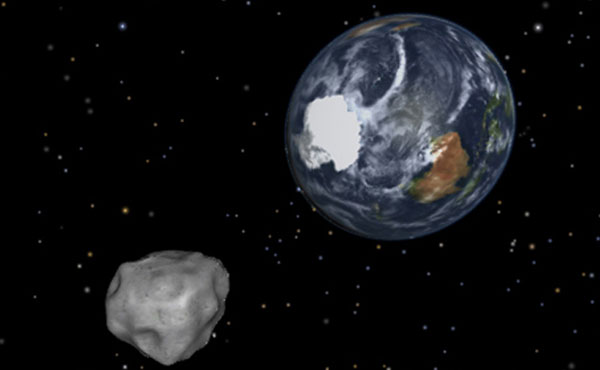NASA to boost meteor defense
Updated: 2013-02-20 09:05
(China Daily/Agencies)
|
|||||||||||
In line with a goal set by the US Congress in 1998, NASA has already discovered and catalogued around 95 percent of the asteroids of a kilometer or more in diameter that are in Earth's orbit around the sun and capable of causing mega-destruction.
The NEO program at NASA detects and tracks Earth-approaching asteroids and comets with land-based and orbiting telescopes. Scientists estimate their mass and orbit to gauge whether they pose a danger.
With this system, the Arecibo radio telescope in Puerto Rico, which has an antenna 305 meters in diameter, can observe with great sensitivity a third of the night sky, and detect asteroids that are on the large side.
All asteroid observations made anywhere in the world by telescopes, even by amateur star gazers, must be passed on to the Minor Planet Center, which is financed by NASA and run by the Smithsonian Astrophysical Observatory for the Paris-based International Astronomical Union.
But in times of tight budgets like these, NASA is trying to develop other systems specifically capable of tracking small objects in space.
It is financing to the tune of $5 million a project at the University of Hawaii called Atlas, or Asteroid Terrestrial-Impact Alert System.Researchers say ATLAS, which will monitor the entire visible sky every night, will be able to detect objects 45 meters in diameter a week before they hit the planet.
For those measuring 150 meters in diameter, the system - which could be operational in late 2015 - will give a three-week warning.
 |
|
This graphic depicts the Earth flyby of asteroid 2012 DA14. NASA is now working on asteroid warning systems that can detect objects from space like the one that struck Russia last week. NASA via Agenec France-Presse |
The goal is to find the objects and give enough advance warning for measures to be taken to protect people, said John Tonry, the principal investigator at ATLAS.
The system has sufficient sensitivity to detect a match flame in New York City when viewed from San Francisco, for instance.
"That's enough time to evacuate the area of people, take measures to protect buildings and other infrastructures and be alert to a tsunami danger generated by ocean impacts," according to the ATLAS website.
But NASA's efforts are deemed insufficient by former agency astronauts and scientists who last year launched a project designed to finance, build and launch the first private space telescope to track asteroids and protect humanity.
The foundation, called B612, is trying to raise $450 million to build and deploy a space telescope, named Sentinel, in orbit around the sun, at a distance of 273 million km from Earth to detect most objects that are otherwise not visible.
Agence France-Presse
Related readings:
NASA loses regular communication with ISS
NASA launches new earth observation satellite
NASA finds billions of Earth-size planets
NASA releases earth images at night
Today's Top News
Police continue manhunt for 2nd bombing suspect
H7N9 flu transmission studied
8% growth predicted for Q2
Nuke reactor gets foreign contract
First couple on Time's list of most influential
'Green' awareness levels drop in Beijing
Palace Museum spruces up
Trading channels 'need to broaden'
Hot Topics
Lunar probe , China growth forecasts, Emission rules get tougher, China seen through 'colored lens', International board,
Editor's Picks

|

|

|

|

|

|





